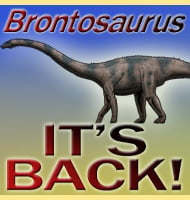In Depth
Unfortunately like with so many other Australian dinosaurs, Atlascopcosaurus is based upon the description of very incomplete remains, in this case part of a jaw. This jaw was been compared to other dinosaur types which has yielded the conclusion that Atlascopcosaurus was probably a member of the Euornithopoda. Also a very rough estimate of a two to three meter long body length has been established for Atlascopcosaurus, though further refinement of this will be impossible without further fossil discoveries.
The name Atlascopcosaurus is derived from the Atlas Copco company which sponsored the dig which discovered Atlascopcosaurus by providing equipment. The type species name is in honour of William Loads, the then state manager for Atlas Copco who also assisted in the dig.
The Eumeralla Formation where Atlascopcosaurus is known from has also yielded fossils of the better known Leaellynasaura. Although a direct link cannot be proven by fossil material, Atlascopcosaurus might have been prey to larger predatory dinosaurs like Australovenator.
Further Reading
Further reading- Polar dinosaurs and biotas of the Early Cretaceous of southeastern Australia. – National Geographic Research 5(1):15-53. – T. H. Rich and P. Vickers-Rich – 1989.









